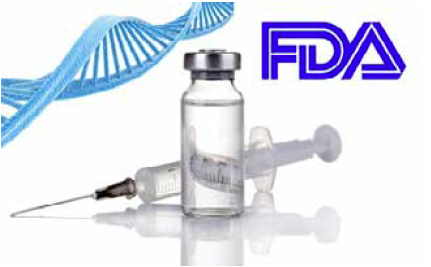Guiding Regulators About Patient Safety
 Volker Knappertz, M.D., VP and Head of Global Clinical Development for MS at Teva Pharmaceuticals, provides a clinician’s view on patient safety, in particular, how the industry might help educate regulators in the development of new regulations for follow-on versions of complex drugs.
Volker Knappertz, M.D., VP and Head of Global Clinical Development for MS at Teva Pharmaceuticals, provides a clinician’s view on patient safety, in particular, how the industry might help educate regulators in the development of new regulations for follow-on versions of complex drugs.
PV: As a neurologist, what perspective do you bring to the drug development process?
Knappertz: As a physician, especially in the context of chronic and often life-long diseases that require long-term treatment, I believe the safety and tolerability of a treatment are paramount. Often there is a delicate balance between the efficacy of a treatment and its safety and tolerability, especially when it comes to the ability of the patient to adhere to treatment in the long run. In addition, treatments should have a predictable safety profile and a low side effect profile to encourage good patient adherence.
For the treatment of patients with chronic, complex neurological disorders such as multiple sclerosis (MS), Parkinson’s disease, or amyotrophic lateral sclerosis (ALS), finding a safe and effective therapy can be particularly challenging. These disorders are not fully understood and symptoms can vary from patient to patient. As the drugs needed to treat these disorders are also of a highly complex nature, I have some concerns about follow-on versions, which may be manufactured differently from the reference product. If they differ even slightly from the reference products, they may significantly impact patient care and outcomes.
PV: The industry is closely watching as the FDA works to finalize its guidance on follow-on versions of biologics (biosimilars). What do you believe are important considerations for patients?
Knappertz: In contrast to more common small-molecule drugs, the high complexities of biologics make them difficult to characterize and replicate. And while non-biologic complex drugs (NBCDs) differ from biologics — they are often synthetic or partially synthetic vs. made entirely from living sources — they can be just as complex to manufacture, which can affect their composition, therapeutic equivalence, and tolerability profile.
The FDA has indicated that manufacturers of biopharmaceuticals, including the reference drugs and biosimilars, will need to submit comprehensive pharmacovigilance and risk management plans in addition to clinical trial data to establish biosimilarity. Yet, the FDA does not request the same extensive pre-approval testing to determine any potential immunogenicity issues, unforeseen side effects, or unknown efficacy between a reference NBCD and follow-on. Bioequivalence data alone may not be sufficient to predict how the drug will behave in patients. Physicians who prescribe these drugs and patients who take them should have the right to know more about the interchangeability and substitutability of complex drugs.
There should be the same consideration to the regulatory pathway for follow-on versions of NBCDs as there are for biosimilars, including postmarketing surveillance studies.
PV: What are your thoughts on regulatory policies for interchangeability and substitution for biosimilars and follow-on NBCDs, and what does it mean for patients?
Knappertz: According to the Biologics Price Competition and Innovation Act (BPCI), biosimilarity alone does not imply interchangeability or substitutability between biologics and biosimilars. Unlike generic copies of small-molecule drugs, biosimilars and follow-on NBCDs are not identical to the innovator products. As the manufacturing process used to produce reference drugs is often proprietary, some variation in alternate-sourced products is inevitable. Slight but clinically meaningful differences between reference and follow-on NBCDs may make interchangeability unfeasible.
In the United States, to gain approval for interchangeability for biological drugs, the safety and diminished efficacy risks of switching patients between the reference drug and a follow-on version must be no greater than continuing the patient on the reference product.
Ultimately, U.S. regulatory requirements for interchangeability and drug substitution of follow-on NBCDs should require a case-by-case approach. We are encouraged by the FDA’s recognition of these challenges and the steps the agency has taken to carefully evaluate the science for these complex drugs but the industry and medical community also need to be involved in the scientific dialogue. We hope the FDA will take the emerging scientific data into consideration.
PV: What role can health practitioners play in this dialogue to assure the safety of new drugs?
Knappertz: To protect patients, physicians need to be vigilant in monitoring their patients’ response to treatment and accurately and promptly report both adverse and substandard pharmaceutical events (SPEs), i.e., when the drug does not seem to be working optimally. This way, issues will be quickly identified and attributed to the correct product and manufacturer. The recognition of SPEs is particularly relevant for drugs that treat complex diseases, because if the desired treatment effect is not achieved, that can mean serious setbacks for patients with chronic illnesses.
Diligent postmarketing monitoring is important for follow-on versions of NBCDs as the FDA does not currently require the same preapproval testing between a reference drug and a follow-on version. (PV)
~~~~~~~~~~~~~~~~~~~~~~~~~
FDA Biosimilar Guidance
 In May 2014, the FDA released a draft guidance explaining how the agency will evaluate biosimilarity as well as help sponsors design clinical pharmacology studies. Specifically, the guidance discusses some of the concepts related to clinical pharmacology testing, approaches for developing the appropriate clinical pharmacology database, and modeling and simulation for designing clinical trials.
In May 2014, the FDA released a draft guidance explaining how the agency will evaluate biosimilarity as well as help sponsors design clinical pharmacology studies. Specifically, the guidance discusses some of the concepts related to clinical pharmacology testing, approaches for developing the appropriate clinical pharmacology database, and modeling and simulation for designing clinical trials.
The guidance provides four outcomes of assessment. A product could be deemed similar, not similar, highly similar, or similar with “fingerprint-like similarities." Regulatory officials say highly similar with fingerprint-like similarity means the proposed biosimilar product meets the statutory standard for biosimilarity based, in part, on integrated, multi-parameter approaches that are extremely sensitive in identifying analytical differences.
~~~~~~~~~~~~~~~~~~~~~~~~~
















